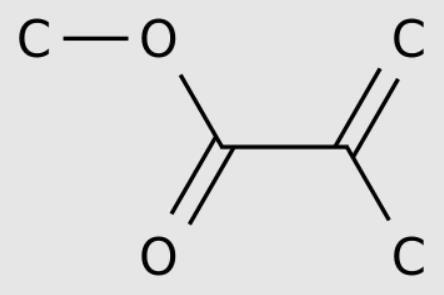In addition to manufacturing technology, there are other factors based acrylic types, such as acrylic plastic grades that provide unique thermal, optical, impact strength, flow rate, or release characteristics for specific engineering applications. These grades can also be coated to improve their scratch resistance, atomization performance, glare, and other drawbacks. Acrylic acid is also widely used as paint, and pigment particles are suspended in acrylic polymer lotion. After drying, the acrylic resin is resistant to water, scratches, cracking, UV radiation, and leaves a charming luster. This coating can also be used as a protective coating, such as exterior wall coating.
What is the use of acrylic acid (PMMA)?
Common uses of acrylic acid (PMMA) include: Automotive lighting, household appliances, eyeglasses, window shatterproof panels, skylights, bulletproof Safety barrier, signs and displays, LCD screens, bathtubs, furniture and acrylic nails, and many other applications.
PMMA is also used in MMA based coating polymers and provides stability against environmental conditions, reducing VOC emissions. Methacrylate polymers are widely used in medical and dental applications, where purity and strength are crucial for performance. The following are some other uses of polymethyl methacrylate.
When tensile strength, bending strength, polishing performance, transparency, and UV resistance are most important, PMMA is used as a low-cost alternative to polycarbonate. PMMA also does not contain potentially harmful bisphenol a subunits found in polycarbonate, making it a better choice for laser cutting. Due to its moderate performance, ease of handling and processing, and low cost, it is often favored.
Unmodified poly methyl methacrylate is fragile under load, especially under impact force, and is more prone to scratching than traditional inorganic glass. However, modified PMMA can sometimes achieve high scratch and impact resistance.
PMMA has excellent mechanical properties and low toxicity. Due to its inert properties and slow degradation, it is very popular in hip joint transplantation. Therefore, manufacturing the polymer mixture of Polycaprolactone and PMMA can produce polymer materials more suitable for biomaterial applications.
Home decoration and architecture: PMMA will come in handy in architecture. Commonly used for shatterproof skylights. It is also used in many shower and bathtub units. Many people even prefer PMMA tiles. In addition, PMMA can be found in many soundproof rooms, audio studios, and cars.
Windows: Acrylic is a lighter and more versatile material, which means it is easier to install than other windows (such as glass). In addition, PMMA is not easily broken, and even if the organic glass window breaks, it will produce blunt edge fragments instead of sharp glass fragments, which is safer.
